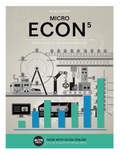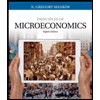
The long-run
Concept Introduction:
Perfect Competition- A market is said to be perfectly competitive when it has a virtually infinite number of buyers and sellers selling a homogenous product with free entry into and exit from the market. The buyers and sellers have perfect knowledge about the products and markets and there are no selling and transportation costs. The sellers are price takers and they face a perfectly elastic
The monopolistic firm- A form of imperfect competition where there are a very large number of buyers and sellers in the market. The products are nearly but not perfectly homogenous, i.e. there is product differentiation. The entry and exit of firms are free. Unlike the perfect competition, the firms have selling costs and imperfect knowledge marks the structure of the market. The market is a deviation from the ideal but not as competitive as the oligopoly or duopoly market. The demand curve facing the firm here is high though not perfectly elastic. It is a downward sloping demand curve.
Marginal Revenue (MR) - The revenue earned by a firm by selling one additional unit of the output is the marginal revenue of the firm.
Marginal Cost (MC) - The cost incurred by a firm in the production of one more unit of output is the marginal cost of the firm.
Trending nowThis is a popular solution!

- how commond economies relate to principle Of Economics ?arrow_forwardCritically analyse the five (5) characteristics of Ubuntu and provide examples of how they apply to the National Health Insurance (NHI) in South Africa.arrow_forwardCritically analyse the five (5) characteristics of Ubuntu and provide examples of how they apply to the National Health Insurance (NHI) in South Africa.arrow_forward
- Outline the nine (9) consumer rights as specified in the Consumer Rights Act in South Africa.arrow_forwardIn what ways could you show the attractiveness of Philippines in the form of videos/campaigns to foreign investors? Cite 10 examples.arrow_forwardExplain the following terms and provide an example for each term: • Corruption • Fraud • Briberyarrow_forward
 Principles of MicroeconomicsEconomicsISBN:9781305156050Author:N. Gregory MankiwPublisher:Cengage Learning
Principles of MicroeconomicsEconomicsISBN:9781305156050Author:N. Gregory MankiwPublisher:Cengage Learning Principles of Economics (MindTap Course List)EconomicsISBN:9781305585126Author:N. Gregory MankiwPublisher:Cengage Learning
Principles of Economics (MindTap Course List)EconomicsISBN:9781305585126Author:N. Gregory MankiwPublisher:Cengage Learning Principles of Microeconomics (MindTap Course List)EconomicsISBN:9781305971493Author:N. Gregory MankiwPublisher:Cengage Learning
Principles of Microeconomics (MindTap Course List)EconomicsISBN:9781305971493Author:N. Gregory MankiwPublisher:Cengage Learning Principles of Economics, 7th Edition (MindTap Cou...EconomicsISBN:9781285165875Author:N. Gregory MankiwPublisher:Cengage Learning
Principles of Economics, 7th Edition (MindTap Cou...EconomicsISBN:9781285165875Author:N. Gregory MankiwPublisher:Cengage Learning





